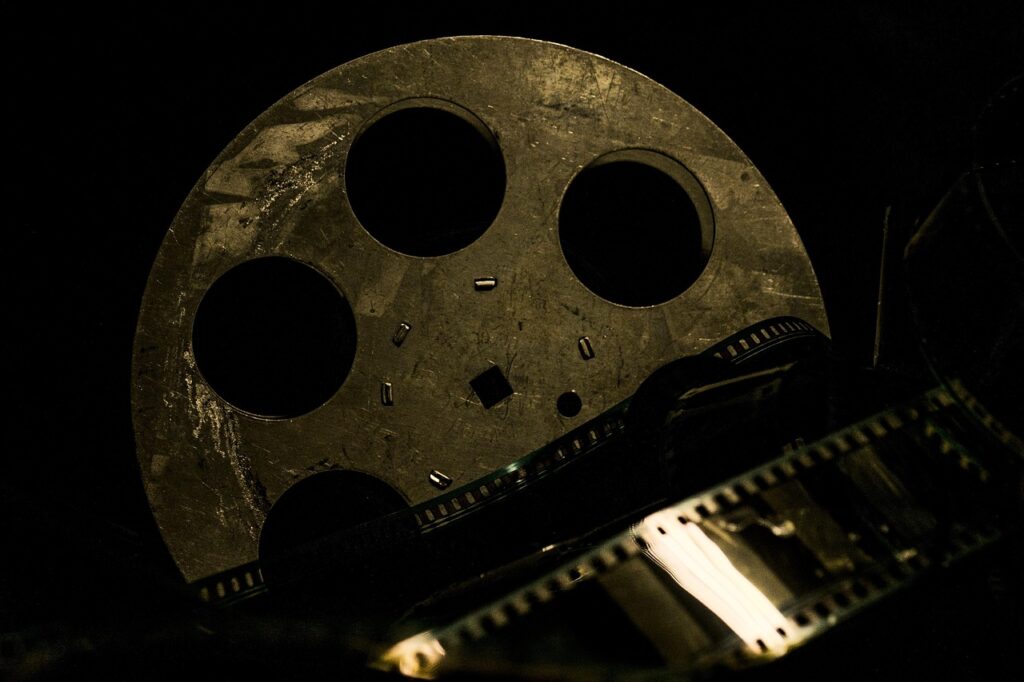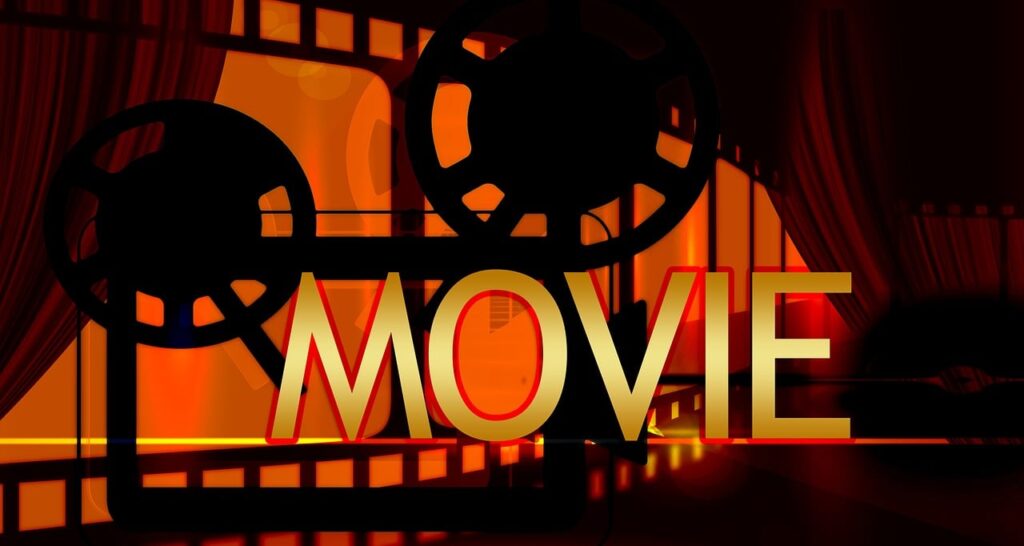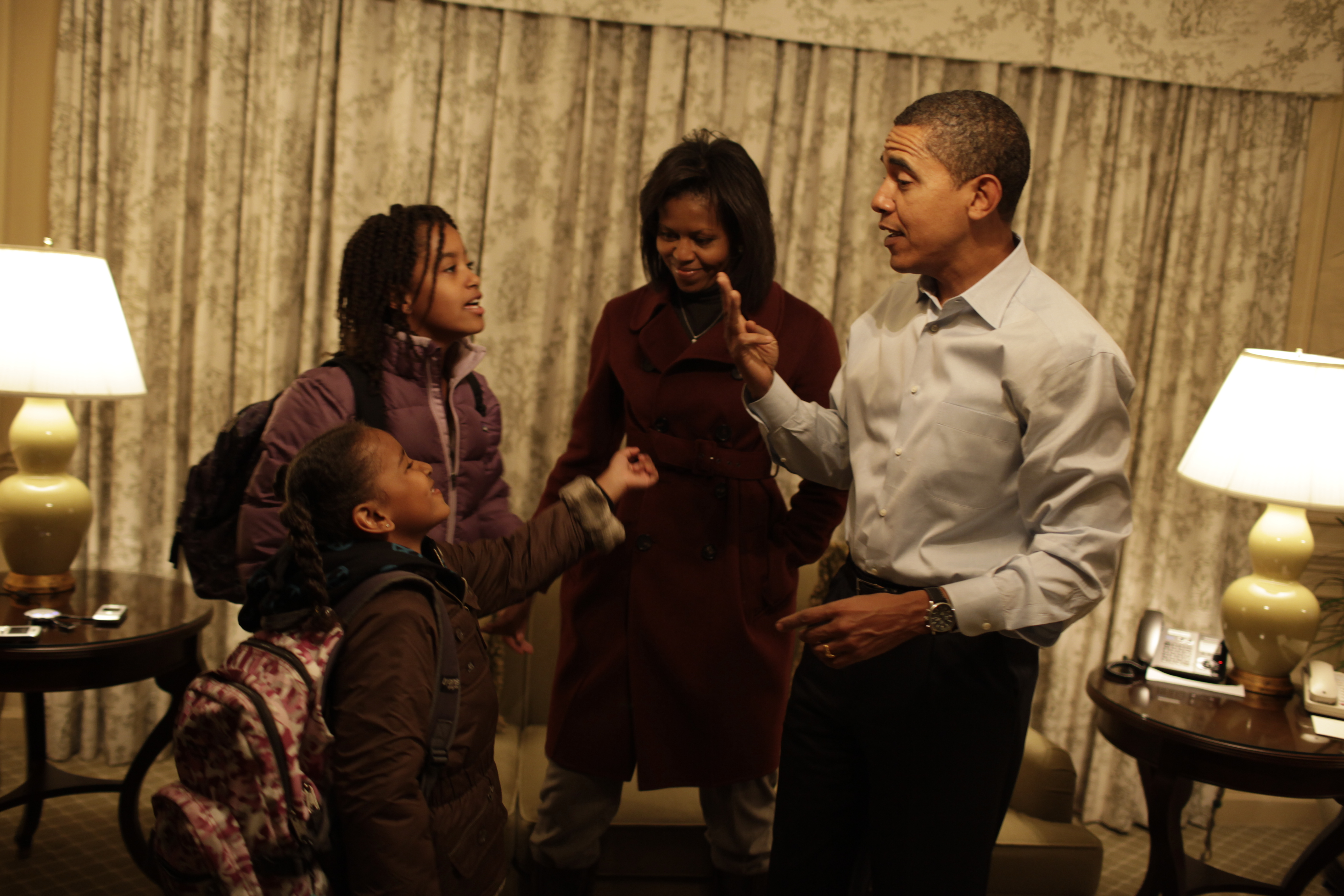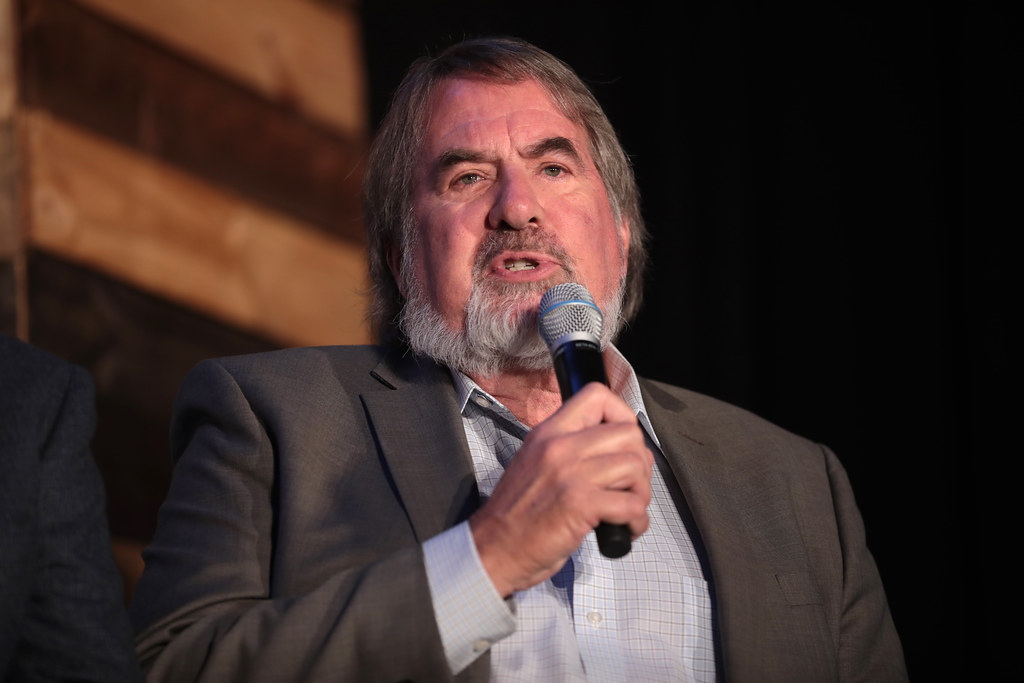
In the sprawling, often exhilarating landscape of Hollywood, the siren call of nostalgia is a powerful force, frequently leading studios to revisit beloved franchises, reintroduce iconic characters, and embark on sequels or reboots. While the promise of experiencing cherished narratives anew can be a fan’s dream, this pursuit often treads a fine line between delivering genuine enchantment and producing what can only be described as a cinematic misstep. The entertainment industry, deeply steeped in popular culture and fan discussions, frequently attempts to capitalize on established successes, yet the outcomes are not always as planned.
Indeed, some stories are so perfectly crafted, so definitively concluded, that any attempt to extend their run or resurrect their key players can feel like a betrayal of their original magic. In an age where even a hint of a familiar character’s return can generate immense buzz, the objective evaluation of these projects often reveals them to be little more than “fan service” – a superficial nod to the past that fails to justify its own existence. This constant push-and-pull between honoring legacy and forging new ground often results in films that, objectively speaking, “shouldn’t exist at all.”
This article embarks on a critical journey through a selection of these unfortunate ventures, focusing on instances where the return of an original character, or an entire cast, actively diminished the impact of earlier, beloved installments. We will dissect *what went wrong* in these high-profile comebacks, analyzing how narrative integrity was compromised, iconic endings were undone, and why, sometimes, the best stories are those that are simply “better left alone so they can end on a high note instead of fizzling out.” Join us as we explore the movies and characters that arguably “should have stayed retired.”
1. **Sharon Stone As Catherine Tramell In ‘Basic Instinct 2’**:The allure of iconic roles often compels studios and actors alike to revisit past glories, but sometimes, an unforgettable performance is best left as a singular cinematic event. Sharon Stone’s portrayal of the enigmatic and dangerous crime novelist Catherine Tramell in 1992’s “Basic Instinct” captivated audiences, creating a quintessential whodunnit that perfectly framed her character’s chilling magnetism. It was a premise that, by its very nature, seemed self-contained and complete, an audacious thriller that delivered its full impact in one compelling narrative.
However, nearly fifteen years after the original, the decision was made to produce a sequel, “Basic Instinct 2.” This lengthy gap, coupled with numerous “false starts” in its production, hinted at the struggles behind the scenes that ultimately manifested in the film’s lukewarm reception. The narrative choices for Catherine Tramell in her return were particularly perplexing, presenting a “depressed Catherine who’s bummed about her age and wants one last thrill.” This characterization felt like a stark departure from the original’s compelling, self-assured femme fatale, failing to resonate with the audience in the same powerful way.
As Stone herself commented on the prolonged development, “Well, you know they tried other things over the years. They had all these different ideas; they even sold it to a different producer who wanted to make it with a different actress. He called me into have a meeting, and talk to me about it, and I explained to him, ‘Great idea, let’s do it.’” This quote suggests a complex journey to production, potentially indicative of a project struggling to find its purpose and ultimately failing to recapture the original’s sharp edge. The sequel highlighted the perils of attempting to force a continuation where the initial story had already achieved its perfect, one-off conclusion, leaving fans with a diluted echo of what once was.
Read more about: Hollywood’s Infamous Landmines: 14 Films That Absolutely Decimated A-List Careers
2. **Ian McDiarmid As Emperor Palpatine In ‘The Rise of Skywalker’**:In the vast lore of Star Wars, Emperor Palpatine stands as one of cinema’s most formidable villains, a puppet master whose machinations defined an entire galactic struggle. His definitive demise at the hands of his own apprentice, Darth Vader, in “Return of the Jedi,” was a pivotal, emotional climax that underscored Luke Skywalker’s triumph and Vader’s redemption. Even his fully fleshed-out backstory in the prequel series, ending with “Revenge of the Sith,” solidified his narrative arc, seemingly bringing his dark saga to a complete close.
Yet, the decision to bring Palpatine back in 2019’s “The Rise of Skywalker” proved to be a baffling and ultimately damaging move for the sequel trilogy’s narrative coherence. While hearing Palpatine’s “classic cackle in trailers” certainly sparked intrigue, the execution of his return felt like a forced “retcon[ning] 90% of Palpatine’s storyline.” Instead of a Force ghost or a mystical vision, the film bizarrely revealed that Palpatine, or “at least a slew of clones,” had been “pulling the Sith strings all along” from a hidden lair.
This retroactive narrative choice was deeply problematic, effectively rendering “everything Leia, Luke, and Han do in Return of the Jedi” as “futile.” It stripped away the significance of their hard-won victory and undermined the very essence of the original trilogy’s ending, solely to create a callback for the sequels. Rather than seizing the “opportunity to create new lore and launch the next generation,” the film opted to go “backwards,” disrespectfully altering established canon, particularly problematic when done “without the creator of the franchise.” It exemplifies a common pitfall of sequels prioritizing fan service over logical storytelling.

3. **Harrison Ford As Indiana Jones In ‘Indiana Jones and the Dial of Destiny’**:Harrison Ford’s Indiana Jones is synonymous with adventure, an iconic archaeologist whose globe-trotting escapades have thrilled generations. The 1989 film, “Indiana Jones and the Last Crusade,” offered what many considered a “perfect sendoff,” with Indy riding off into the sunset, seemingly concluding his legendary career on a high note. It was an ending that felt earned, a satisfying capstone to a beloved trilogy that masterfully blended action, humor, and heart.
However, the allure of the fedora and whip proved too strong to resist, leading to Ford’s reprisal of the role first in 2008’s “The Kingdom of the Crystal Skull” and then again in 2023 with “The Dial of Destiny.” While it’s clear “Ford enjoys playing the character,” his repeated returns for Indiana Jones, even as he resisted further Star Wars appearances, signaled a deep affection for the role. Yet, critically, it was “probably time to hang up the hat after The Last Crusade,” as the subsequent films struggled to justify their existence beyond pure nostalgia.
“The Crystal Skull” notoriously introduced a “bizarre alien angle” that many fans found incongruous with the established mythology, feeling more at home “in the pages of Weekly World News rather than an action-adventure movie.” “The Dial of Destiny” faced its own set of criticisms, notably for its “clumsy CGI that attempts to de-age Ford.” This technological attempt to defy age felt like a concession rather than an embrace of an older hero, leading to the direct commentary, “Show us an 80-year-old Indiana Jones or don’t make the movie.” Compounding these issues were general criticisms of the film’s “special effects” and Ford’s on-set shoulder injury, prompting his candid remark, “Yeah, well, I’m also known for shutting movies down because I get hurt, which is not something you want to be known for. But hey, sh*t happens.” These later installments ultimately served as cautionary tales against stretching a perfect ending past its natural conclusion.
Read more about: Phoebe Waller-Bridge’s Hollywood Odyssey: Unpacking the $100 Million Amazon Deal and the Projects That Left Tinseltown Scratching Its Head
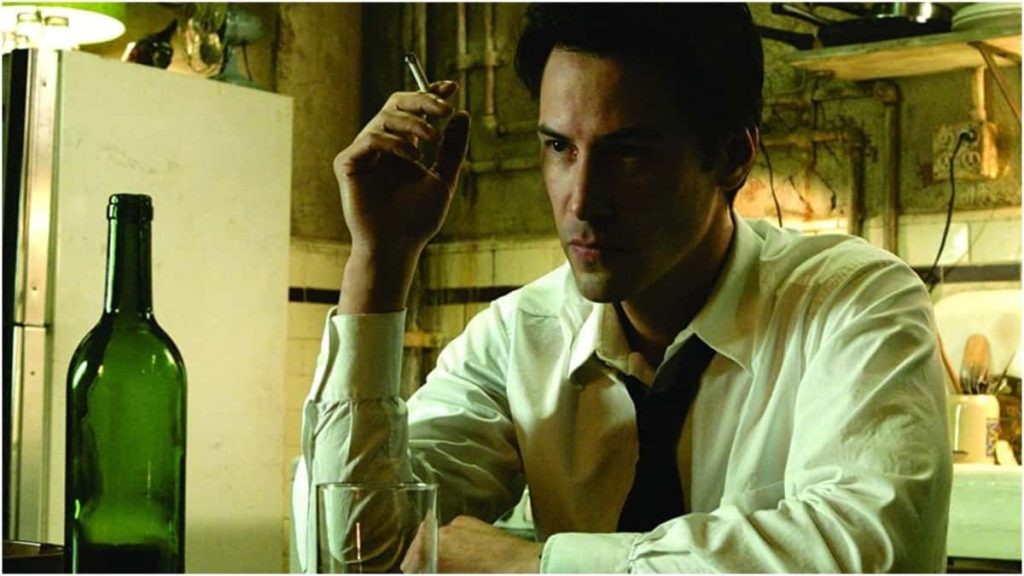
4. **Keanu Reeves As Neo And Carrie-Anne Moss As Trinity In ‘The Matrix Resurrections’**:The original “Matrix” trilogy culminated in a powerful, albeit heartbreaking, conclusion with “Matrix Revolutions” (2003). Carrie-Anne Moss’s Trinity met a memorable end, dying in Neo’s arms, a sacrifice that underscored the gravity of their war against the Machines. This moment set the stage for Neo’s ultimate, prophesied sacrifice, a choice integral to the franchise’s exploration of “premeditation versus free will” and his identity as “The Chosen One.” The ending was poignant and definitive, providing closure to a complex, philosophical narrative.
Then came 2021’s “Matrix Resurrections,” which brought both Reeves and Moss back, immediately raising the critical question: “can we not undo important character deaths for fan service?” The film’s decision to revive characters whose demises were so crucial to the initial saga’s resolution felt like a narrative sidestep, undermining the emotional weight of their original sacrifices. Fans had accepted a “satisfying ending in Revolutions that wasn’t without heartbreak,” a common outcome in any cinematic war.
The resurrection of Neo and Trinity also felt “simply too easy” within the new storyline, with the Machines bringing them back, conveniently aging them “20 years since it’s been, you know, 20 years for the actors – though 60 years have passed in the franchise’s canon.” This narrative contrivance not only strained credulity but also, more significantly, “undervalues the entire existence of the first three movies.” By stripping away the finality and choice inherent in their original fates, “The Matrix Resurrections” diminished the very philosophical foundations upon which the groundbreaking franchise was built, leaving many to wonder if some stories are truly better left undisturbed.
Read more about: Beyond the Red Pill: Unpacking Keanu Reeves’s Enduring Commitment to The Matrix Saga

5. **Arnold Schwarzenegger As The Terminator In ‘Terminator Genisys’**:The “Terminator” franchise achieved cinematic legend status with its first two installments, particularly with Arnold Schwarzenegger’s iconic portrayal evolving from villain to a protective, paternal figure in “Terminator 2: Judgment Day.” While the third film in the series garnered mixed reactions, it was 2015’s “Terminator Genisys,” released “13 years after the third installment,” that truly veered into territory that many fans considered “pretty rough.” The character’s redemption arc felt complete, making subsequent entries often feel redundant and largely “not necessary.”
“Terminator Genisys” earned its place as a cinematic misstep by fundamentally “mudd[ying] canon” through its convoluted plot. The film initiated the events of the first movie only to immediately “create an alternate timeline with an entirely different Sarah Conner.” This narrative choice allowed the creators to execute what essentially felt like “a remake without technically having to call it one,” introducing “new actors for all of the original characters.” Schwarzenegger’s return was primarily to “cement it into the universe and launch it as a sequel of sorts instead of a remake,” but the hybrid approach proved deeply problematic.
The result was a film that felt “very out of place in the canon,” neither a clean reboot nor a cohesive continuation. It struggled to define its identity, leaving audiences confused about its place in the established timeline and what it truly aimed to achieve. The critique suggests that “the creators should have probably opted for a true sequel or a full remake rather than a hybrid,” indicating that its attempt to have it both ways ultimately satisfied no one and merely complicated an already complex narrative, confirming its status as a significant stumble for the beloved series.
Read more about: From Austrian Oak to Global Statesman: An In-Depth Chronicle of Arnold Schwarzenegger’s Enduring Legacy
6. **Everyone In ‘Toy Story 4’**:”Toy Story 3″ delivered what was widely hailed as the “perfect end to the franchise.” The film beautifully mirrored the audience’s own journey, as fans “grew up alongside Andy” and watched him say goodbye to his childhood toys. The cyclical ending, with Andy passing his beloved companions to the next generation, encapsulated a bittersweet yet deeply comforting message: that while we may outgrow our toys, their joyous purpose lives on. It was a poignant, heartfelt conclusion that resonated universally, affirming the enduring power of childhood innocence and enduring friendships.
However, in 2019, “Toy Story 4” arrived in theaters, immediately inviting scrutiny for its decision to extend a story that had already found its ideal denouement. The film’s primary misstep, for many, was “retconning a happily ever after.” The comforting notion that “our childhood lives on for the next generation” and the belief in the toys being “happy and together as a new kid enjoys all they have to offer” was central to the previous film’s emotional impact. “Toy Story 4” disrupted this by having the gang “break up after they go on a long-winded journey to find Woody, who opts to stay with Bo Peep.”
This narrative choice, while arguably allowing “the toys to grow up the same way the audience has,” was ultimately deemed “not exactly a necessary plotline” and represented a “loss of innocence in watching a found family break up.” The film fractured the core group that viewers had cherished for decades, challenging the very “suspension of reality and the happy preservation of being a kid” that defined the franchise. Furthermore, behind the scenes, the original screenplay by Rashida Jones and Will McCormack was discarded due to “creative and, more importantly, philosophical differences,” leading to their telling joint statement about Pixar’s “culture where women and people of color do not have an equal creative voice.” This internal discord added another layer to the film’s troubled production, underscoring how a cherished narrative can lose its way when forced beyond its natural conclusion.
The preceding discussion illuminated the often-treacherous path of reviving beloved characters, a journey fraught with the risk of diminishing cherished legacies. However, the labyrinthine world of cinematic missteps extends far beyond mere character comebacks. Another equally challenging, and often more perilous, endeavor in Hollywood is the adaptation of literary works, particularly when the source material comes from a master storyteller like Stephen King. His prolific output, characterized by intricate psychological horror, profound character studies, and often surreal fantasy elements, presents a unique double-edged sword: it’s incredibly fertile ground for filmmakers, yet notoriously difficult to translate faithfully and effectively to the big screen. Many have tried, but few have truly succeeded in capturing King’s unique magic without losing something vital in translation.
We now shift our critical lens to a collection of Stephen King adaptations that, despite their promising premises and often talented crews, unfortunately crashed and burned, proving that sometimes even the most compelling stories are better left within the pages of a book. These films serve as stark reminders of the immense challenges involved in converting complex literary horror and fantasy into a cohesive, impactful cinematic experience, often highlighting the crucial disconnect between the written word and visual storytelling. From ambitious sagas to bizarre concepts, these are the King adaptations that, arguably, should have stayed in the can.
Read more about: Unraveling the Magic: The Most Unbelievable Plot Holes in Classic Disney Films That Still Bother Us
7. **Thinner (1996)**:Stephen King’s novel ‘Thinner’ presented a relatively straightforward, albeit chilling, premise that, on paper, seemed ripe for a cinematic translation. Penned by Tom Holland, a writer known for his work on ‘Child’s Play,’ the adaptation should have been a slam dunk. The narrative centers on an overweight attorney who finds himself cursed by a gypsy, condemned to waste away to nothing, literally becoming “thinner” as his life force drains.
However, the film version struggled significantly in bringing this seemingly simple concept to life. Critics and audiences alike found that the story’s core themes and visceral horror failed to resonate on the big screen. Instead of delivering a truly unsettling psychological body horror, the movie often veered into uncomfortable territory, lurching “from awkward stereotype to awkward stereotype,” which ultimately undermined its intended impact and made viewers cringe.
This awkward execution is reflected in its critical reception, scoring a “paltry 14% on Rotten Tomatoes.” The film’s inability to effectively translate its central curse and character arc, combined with its heavy reliance on clumsy stereotypes, ensured that ‘Thinner’ became a prime example of an adaptation that simply couldn’t capture the essence and tension of its source material, making it a forgettable entry in the vast King cinematic universe.
8. **The Mangler (1995)**:The 1995 adaptation of ‘The Mangler’ arrived with considerable pedigree, boasting an impressive creative team that should have instilled confidence in horror aficionados. The project not only secured the directorial talents of Tobe Hooper, the visionary behind classics like ‘The Texas Chainsaw Massacre’ and ‘Poltergeist,’ but also featured Robert Englund, an actor best known for his iconic portrayal of Freddy Krueger in ‘A Nightmare on Elm Street.’ This combination alone was enough to excite any horror fan, even before adding Stephen King’s name to the mix.
Given the talent involved, one might naturally wonder about the potential masterpieces this team could have created, perhaps tackling other King works such as ‘Bag of Bones’ or ‘1408.’ Yet, the premise they were tasked with was, to put it mildly, unconventional and bizarre: a “possessed industrial laundry press.” It sounds like a joke, but the film genuinely revolves around this sentient, murderous machine, transforming a mundane object into a vehicle for supernatural terror.
The plot itself has been humorously likened to ‘Little Shop of Horrors,’ but with a crucial difference: “take away the songs, add detergent.” Despite its outlandish concept, or perhaps because of it, the film somehow spawned two sequels, a phenomenon that perplexes many who encountered the original. The existence of these continuations remains a mystery, highlighting how a fundamentally flawed premise, even with a powerhouse crew, can struggle to deliver genuine horror and instead devolve into unintentional absurdity.

9. **The Dark Tower (2017)**:Stephen King’s ‘The Dark Tower’ series is an epic, sprawling narrative, often described as his magnum opus, consisting of fourteen books—each a substantial literary undertaking. Adapting such an intricate and extensive saga was always going to be an monumental challenge for any filmmaker, a task that demanded careful planning and a deep understanding of the source material. The sheer volume of content, with individual books serving as metaphorical desk props due to their heft, presented an immediate hurdle for cinematic compression.
Regrettably, the film’s journey to the big screen was fraught with production problems even before its release, setting a concerning precedent. When ‘The Dark Tower’ finally premiered, it was met with scathing reviews from both critics and ardent fans of King’s literary universe. The fundamental issue stemmed from Sony Pictures’ ambitious, yet ultimately misguided, attempt to condense the entire sprawling series into a mere “ninety-five minutes.”
This extreme truncation led to widespread accusations of “stripping all the character and color out of the source material,” leaving a hollow shell that bore “no resemblance to the original.” The film’s narrative felt rushed and underdeveloped, failing to establish the rich world-building and complex relationships that define King’s novels. For those seeking a genuinely good recent Stephen King movie that successfully captures the author’s spirit, the consensus often points to ‘Doctor Sleep’ as a far more satisfying alternative, underscoring the severe missteps taken with ‘The Dark Tower.’
Read more about: The Perpetual Motion Machine: Why Hollywood Can’t Quit Its ‘It Boy’ Obsession and the Seven Faces Dominating Your Screens
10. **The Dreamcatcher (2003)**:’The Dreamcatcher’ arrived on screen remarkably quickly after its literary release, with only two years separating the book from its cinematic counterpart. The novel was a considerable bestseller, and this swift turnaround suggests that the film rights were optioned with urgency, perhaps without a thorough evaluation of how its unique elements might fare in adaptation. This rush to production often proves detrimental when translating complex narratives.
Indeed, several crucial plot points from King’s novel proved exceptionally difficult to render effectively on film. The story features main characters who can “telepathically talk to each other,” a concept that can easily feel contrived or visually unengaging on screen. Furthermore, a significant portion of the book confines these characters to a secluded cabin, which, while conducive to psychological tension in print, can lead to a sense of stagnation and claustrophobia in a visual medium. Then there’s the peculiar character of “Duddits,” whose unique nature presented its own set of translation challenges.
As a book, ‘The Dreamcatcher’ thrives as a psychological horror, characterized by a slow, deliberate build-up of suspense and a satisfying twist ending that rewards patient readers. In contrast, the movie adaptation, clocking in at a lengthy “2 hours 16 minutes,” became a testament to how these literary nuances can be lost. It was widely criticized as being “long, slow and tedious,” failing to replicate the book’s immersive dread and instead becoming a laborious viewing experience that couldn’t quite grasp its own narrative potential.
Read more about: From Rock Bottom to Red Carpet: 15 Celebrities Who Proved It’s Never Too Late For An Epic Comeback

11. **Pet Sematary (1989)**:The 1989 film adaptation of Stephen King’s ‘Pet Sematary’ holds a unique, almost controversial, position within cult movie circles, with a segment of fans expressing considerable affection for it. However, a critical examination reveals that, despite its devoted following, the film faced significant hurdles that ultimately hampered its ability to deliver the full impact of King’s terrifying tale. The primary issue lay not in its ambition, but in the technological constraints of its era.
The 1980s, for all its cinematic charm, simply did not possess the “special effects capabilities to do this story justice.” ‘Pet Sematary’ is a narrative steeped in the grotesque and the supernaturally disturbing, relying on visceral horror and the chilling resurrection of the dead. These elements demand sophisticated visual effects to truly unsettle an audience and convey the story’s grim reality.
Unfortunately, the film’s attempts at rendering these terrifying aspects often fell short. From the practical challenges of “working with the animals” to the limitations of “special effects makeup,” the results sometimes inadvertently undermined the scare factor. The notorious “zombie cat is super cute,” a descriptor that perfectly illustrates the unintended softening of a creature meant to be horrifying. It highlights why a reboot was deemed necessary by many, solely to leverage modern technology and “increase the scare factor,” proving that some stories truly benefit from contemporary cinematic tools to achieve their intended horrifying vision.
Read more about: The Scariest Movies Where Kids Are Targeted or Turn Evil

12. **The Lawnmower Man (1992)**:’The Lawnmower Man’ arrived in cinemas in 1992, boldly billed as a Stephen King adaptation, a designation that immediately drew the author’s ire. The film, in reality, “bore no resemblance to the actual short story on which it is based,” creating a significant disconnect between the advertised source material and the cinematic product. This creative departure was so extreme that it prompted King himself to take legal action.
The core of the conflict lay in the film’s complete fabrication of its technological themes. King’s original short story, a darkly unsettling narrative, contained “not a whiff of a computer,” no “modems, no mainframes, nothing.” Instead, it told the bizarre tale of a man who literally “cuts grass with his teeth,” a stark contrast to the film’s virtual reality-centric plot. Stephen King famously “sued to remove his name from the advertising,” though, frustratingly for him, it “still exists on the credits.”
While the movie was lauded for its “cutting-edge visual effects” at the time of its release, showcasing early virtual reality aesthetics, its “bizarre storyline slowed it down” considerably. The film’s narrative felt disjointed and meandering, ultimately failing to deliver on the promise of either its supposed literary origin or its visual spectacle. For those seeking genuine horror that has truly endured, classics like ‘It,’ ‘Misery,’ or ‘The Green Mile’ serve as far more reliable examples of King’s work translated effectively to film. As a cautionary tale, ‘The Lawnmower Man’ underscores that “Stephen King adaptations are a minefield,” urging viewers to “take care before you press play.”
Read more about: Beyond the Blockbusters: 14 Forgotten Sci-Fi Gems Every Fan Needs to Discover Now!
In the ever-evolving landscape of cinema, both the resurrection of iconic characters and the adaptation of beloved literary works present unique challenges that can either elevate or diminish a franchise. As we’ve journeyed through these cinematic missteps, it becomes abundantly clear that not every story needs an encore, nor does every book demand a screen adaptation. There’s a delicate balance between honoring legacy and forging new ground, a balance that, when lost, can lead to films that are objectively better off remaining unmade. Ultimately, the greatest stories are often those that respect their own boundaries, ending on a high note rather than succumbing to the temptation of an unnecessary continuation or a poorly conceived adaptation, allowing their original magic to shine untarnished for generations to come.


